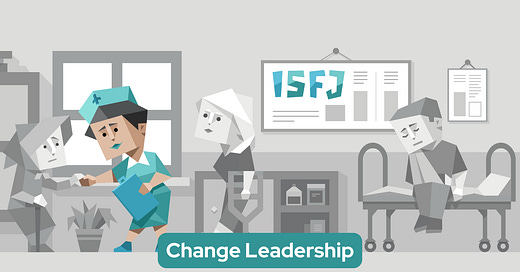Leading ISFJs: Change Leadership Series
Explore ISFJs’ specific change superpowers and challenges, and see how to help them adapt during times of flux.
How to spot ISFJs (Defenders):
ISFJs (Defenders) share the Introverted, Observant, Feeling, and Judging personality traits.
They don’t love change, but they’ll accept it as necessary and adapt for the greater good, dutifully implementing the changes in their own work and adjusting to new processes and expectations. They’ll focus on how the changes will affect their daily tasks and team harmony.
Do you make it a point to give the ISFJs on your team clear instructions? If not, you should, because it will help them do their best work. 👇
ISFJs thrive on clear directions and prefer a well-defined roadmap. Ambiguity and open-ended tasks can be stressful for them. So it’s no surprise that during times of change, ISFJs may struggle with uncertainty. They may hesitate to take initiative or make decisions without explicit guidance.
Here are three leadership strategies you can apply when guiding ISFJs through change:
Provide detailed instructions: Break down new processes or changes into step-by-step guides, or empower ISFJs to do so. Be specific about expectations and desired outcomes.
Offer regular check-ins: Schedule frequent touchpoints to answer questions and provide reassurance. This helps ISFJs feel supported and confident in their work.
Encourage gradual adaptation: Introduce changes incrementally when possible. Allow ISFJs time to adjust and master new skills before moving on to the next phase.
Let’s take this further, shall we? ISFJs often experience the weight of change more intensely than others. But these loyal personalities are generally willing to support management’s decisions, trusting that change is for the good of the team or wider organization. Let’s explore their specific change superpowers and challenges and see how to help them adapt during times of flux.
Next, we’ll cover:
The special strength that ISFJs bring to navigating workplace change
The greatest hurdle that ISFJs encounter during periods of uncertainty
A key leadership strategy for supporting ISFJs through transitions
Keep reading with a 7-day free trial
Subscribe to Leadership by 16Personalities to keep reading this post and get 7 days of free access to the full post archives.






